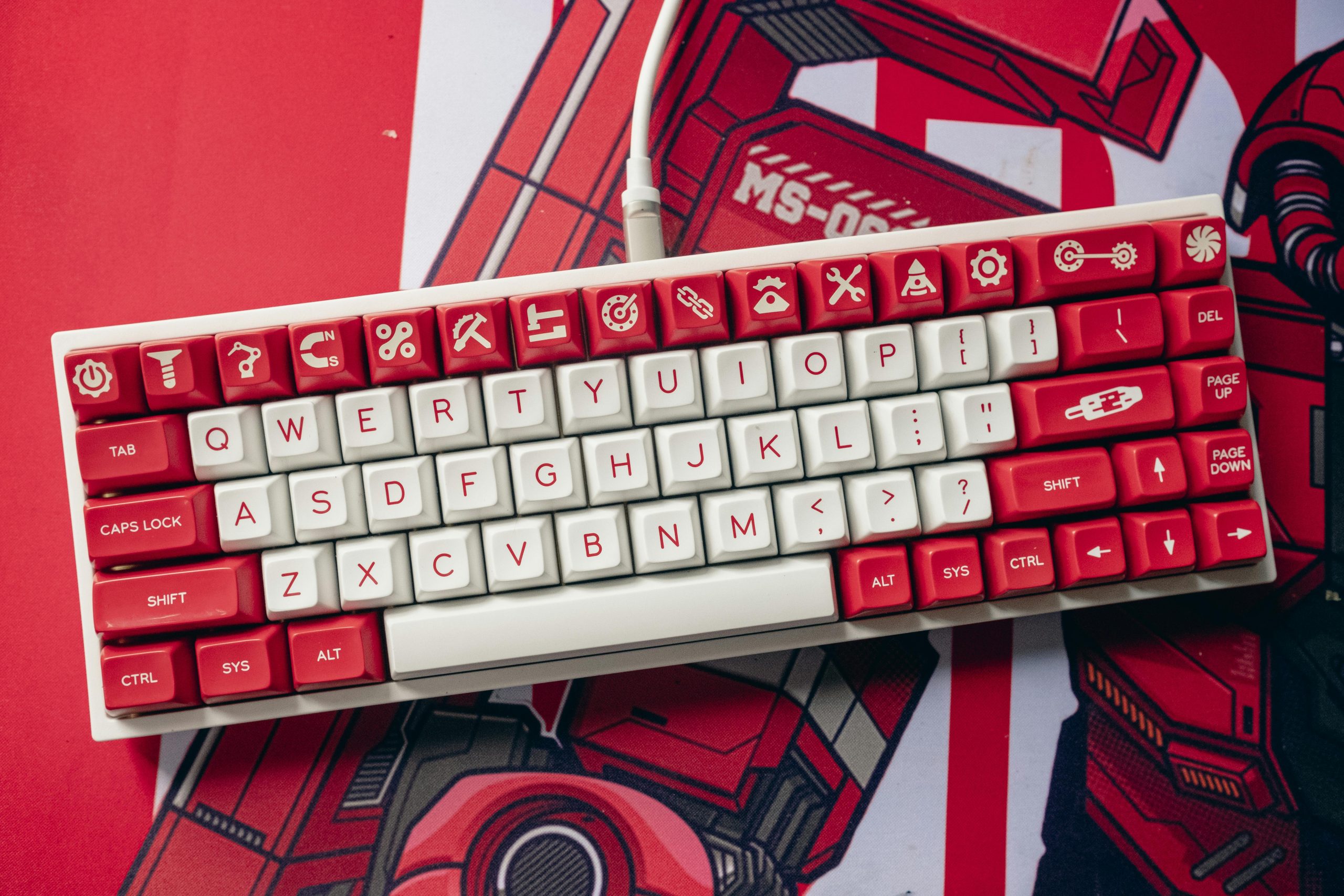
Few things are more frustrating than when your keyboard suddenly stops working—especially when you’re in the middle of something important. Whether you use a desktop PC, laptop, or wireless keyboard, the issue can stem from a range of causes, from hardware failures to software glitches.
This guide will help you diagnose the problem, identify the cause, and apply the right fix. You’ll also learn how to prevent future keyboard issues through maintenance and smart setup habits.
1. Identify the Type of Keyboard

Before jumping into fixes, determine what kind of keyboard you’re using. Different types have different troubleshooting steps.
Common keyboard types include:
- Wired keyboards: Connected via USB or older PS/2 ports.
- Wireless keyboards: Use Bluetooth or a USB receiver.
- Laptop keyboards: Built into the device and often controlled by internal drivers.
- Mechanical keyboards: Feature individual switches and are prone to physical issues like debris.
Knowing your keyboard type helps you focus on the right area—hardware, software, or connectivity.
2. Check the Basics First
Sometimes, the solution is simpler than you think. Start by confirming the fundamentals before diving into technical fixes.
Quick checks:
- Is it plugged in properly? For wired keyboards, ensure the USB connector is fully inserted. Try a different USB port if possible.
- Are the batteries working? Wireless keyboards may stop responding if the batteries are low or dead.
- Is it turned on? Many wireless models have an on/off switch—verify it’s set to “on.”
- Is the connection secure? If you’re using a Bluetooth keyboard, make sure it’s paired and connected to your device.
- Restart your computer. This clears temporary system errors that can disrupt input devices.
If your keyboard still doesn’t work after these steps, it’s time to dig deeper.
3. Troubleshoot Wired Keyboards
Wired keyboards are generally reliable, but physical damage or connection issues can stop them from functioning.
Steps to fix wired keyboards:
- Test the cable and port: Plug the keyboard into another USB port or computer to confirm if it works elsewhere.
- Inspect for damage: Look for frayed cables or bent connectors.
- Update or reinstall drivers:
- Go to Device Manager → Keyboards → right-click your keyboard → Update driver.
- If that fails, select Uninstall device and restart your computer. Windows will reinstall the driver automatically.
- Check for debris: Dirt or dust buildup can block certain keys from working. Use compressed air or a soft brush to clean around the keys.
If none of these steps help, your keyboard may need replacement—especially if the cable or internal circuits are damaged.
4. Troubleshoot Wireless Keyboards
Wireless keyboards add convenience but also come with connection challenges.
Follow these steps:
- Replace or recharge batteries: Low power is the most common issue.
- Re-pair the keyboard: Unpair and re-pair it via Bluetooth or reinsert the USB receiver.
- Check for interference: Keep the keyboard away from wireless routers, microwaves, or other Bluetooth devices that may disrupt the signal.
- Update Bluetooth drivers: Outdated Bluetooth drivers can prevent the keyboard from connecting. Check your PC manufacturer’s website for updates.
- Test the USB receiver: If using a dongle, plug it into another port or computer to verify it’s working.
If your wireless keyboard still doesn’t respond, try connecting it to a different device to confirm whether the issue lies with the keyboard or your computer.
5. Troubleshoot Laptop Keyboards

Laptop keyboards are integrated into the device, which means issues could be hardware- or software-related.
To fix a laptop keyboard that’s not working:
- Restart your laptop: Simple but effective—resets temporary glitches.
- Use an external keyboard: This helps determine if it’s a hardware issue. If the external keyboard works, your laptop’s internal keyboard may need repair.
- Run hardware diagnostics: Many laptop brands (like HP, Dell, or Lenovo) include built-in diagnostic tools accessible during startup.
- Update or reinstall drivers: Go to Device Manager → Keyboards → Update driver.
- Check for stuck keys or debris: Gently clean the keyboard with compressed air.
- Perform a system restore: If the keyboard stopped working after a software update, rolling back to a previous restore point might help.
If your laptop keyboard remains unresponsive, contact a certified technician—especially if you suspect physical damage or a faulty keyboard ribbon cable.
6. Software & Driver Fixes
Keyboard problems aren’t always physical—software conflicts, driver errors, and OS updates can cause sudden malfunctions.
Try these software solutions:
- Update your operating system: Windows or macOS updates often include bug fixes that resolve device issues.
- Uninstall conflicting software: Apps that modify keyboard input (like gaming overlays or custom key remappers) can interfere with normal operation.
- Run the Windows troubleshooter:
- Go to Settings → System → Troubleshoot → Other troubleshooters → Keyboard → Run.
- Check your keyboard settings:
- Go to Settings → Time & Language → Typing and make sure accessibility features like “Filter Keys” are turned off—they can disable fast key responses.
These steps resolve many driver and software conflicts that make keyboards appear “dead.”
7. Physical Cleaning & Maintenance
Regular cleaning can prevent many common keyboard issues caused by dust, spills, or stuck keys.
Cleaning steps:
- Turn off and unplug your keyboard.
- Shake gently upside down to remove crumbs and debris.
- Use compressed air to blow out dust between keys.
- Wipe with a damp microfiber cloth (avoid getting moisture under the keys).
- Deep clean (if necessary): For mechanical keyboards, remove keycaps with a puller and clean thoroughly.
Tips to prevent damage:
- Avoid eating or drinking near your keyboard.
- Use a keyboard cover for protection.
- Store in a clean, dry area when not in use.
Clean keyboards last longer and perform more reliably over time.
8. When to Replace Your Keyboard
If you’ve tried every troubleshooting step and your keyboard still doesn’t work, it may be time to replace it.
Signs you need a new keyboard:
- Certain keys never register despite cleaning.
- Visible physical damage or corrosion.
- Persistent connection dropouts (wireless).
- Your keyboard isn’t detected by any computer.
Choosing a replacement:
- For office use: Look for quiet, membrane-style keyboards.
- For gaming: Consider mechanical keyboards with switch types that match your preference.
- For portability: Compact Bluetooth keyboards work well with tablets and laptops.
Investing in a quality keyboard can enhance your comfort and productivity—and reduce the chances of future issues.
9. Preventing Future Keyboard Problems
Once your keyboard is working properly again, it’s worth taking a few extra steps to prevent the same issues from happening in the future. A little routine care can go a long way toward keeping your keyboard responsive, comfortable, and reliable.
Best Practices for Keyboard Care
- Regular cleaning: Dust, crumbs, and pet hair are common culprits behind sticky or unresponsive keys. Use compressed air to blow debris from between the keys once a week. For deeper cleaning, gently remove keycaps (if your keyboard allows) and wipe the surface with a slightly damp microfiber cloth. Avoid using harsh chemicals or spraying liquids directly on the keyboard.
- Safe storage: When not in use, keep your keyboard in a dry, cool area. Excessive heat, sunlight, or humidity can warp plastic components and damage internal circuits. If you’re using a laptop, avoid eating or drinking nearby—spills are one of the most common causes of permanent keyboard failure.
- Battery checks (for wireless keyboards): Wireless keyboards often experience lag or disconnection when the battery is low. Make it a habit to check battery levels regularly or recharge your device before it completely runs out of power. Keeping spare batteries on hand ensures you’re never left stranded during important work or gaming sessions.
- Software maintenance: Outdated or corrupted drivers can cause communication problems between your keyboard and computer. Check for driver updates through your device manager or manufacturer’s website every few months. Also, keeping your operating system current ensures compatibility with newer firmware and devices.
- Use a surge protector: Power surges from storms or unstable outlets can damage the delicate circuitry inside your keyboard—especially with mechanical or backlit models. Plug your computer and accessories into a surge protector or an uninterruptible power supply (UPS) to shield them from electrical fluctuations.
Additional Tips for Longevity
- Cover your keyboard when not in use to prevent dust buildup.
- Avoid excessive force when typing—gentle keystrokes reduce wear on switches.
- For mechanical keyboards, lubricate switches or stabilizers periodically to maintain smooth performance.
- If your keyboard is portable, store it in a padded sleeve or bag to prevent cable bending and key damage during transport.
By adopting these habits, you can greatly extend the life of your keyboard, maintain its responsiveness, and reduce the likelihood of sudden breakdowns. Good care means fewer repairs, smoother typing, and better performance for years to come.
Final Thoughts
When your keyboard stops working, it’s easy to assume the worst—but most issues are fixable with a few simple checks. By systematically testing connections, updating drivers, and cleaning your keyboard, you can often get it working again without professional help.
If you’ve already tried these solutions and your keyboard still doesn’t respond, it might be time to contact tech support or consider a replacement. A reliable keyboard is essential for productivity, gaming, and communication—so resolving the issue quickly pays off.
Whether you’re dealing with a laptop, wired, or wireless keyboard, following the steps in this guide ensures you’ll identify the problem efficiently and get back to typing without frustration.
